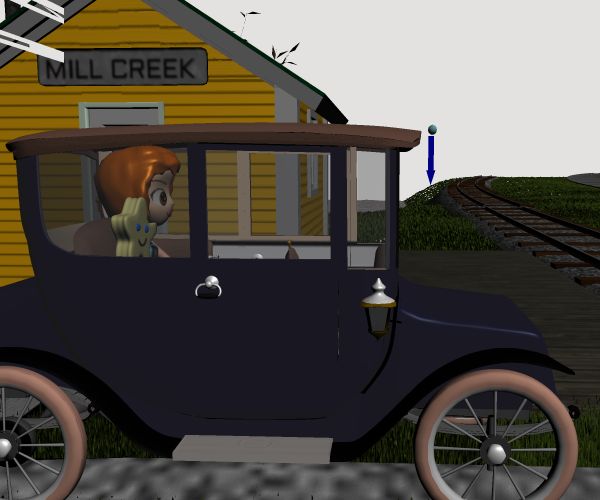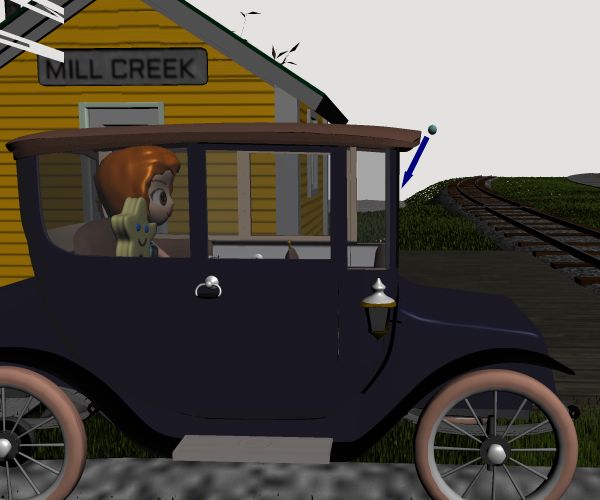Saturday, April 03, 2021
Super-random auto thought
I was wondering why windshield wipers were so late in arriving. They weren't common or standard until the mid-30s.
The answer is simple. Before the mid-30s, wipers weren't seriously needed.
Polistra illustrates with her 1917 Detroit Electric, typical of closed cars before 1933.
When the car is still and the rain isn't blown toward the windshield, rain can't hit the glass at all.
 When the car is moving about 10 MPH, which was typical before 1930, the visor would still protect the glass from much of the rain. The vector shows 10 MPH horizontal movement versus the standard terminal velocity of raindrops, which is 20 MPH.
When the car is moving about 10 MPH, which was typical before 1930, the visor would still protect the glass from much of the rain. The vector shows 10 MPH horizontal movement versus the standard terminal velocity of raindrops, which is 20 MPH.
 Many cars had wider visors and lower roofs (less glass height), giving even more protection.
You don't need a vector to see what happens with a slanted windshield. ALL rain hits it all the time, regardless of wind and motion.
Many cars had wider visors and lower roofs (less glass height), giving even more protection.
You don't need a vector to see what happens with a slanted windshield. ALL rain hits it all the time, regardless of wind and motion.
 When the car is moving about 10 MPH, which was typical before 1930, the visor would still protect the glass from much of the rain. The vector shows 10 MPH horizontal movement versus the standard terminal velocity of raindrops, which is 20 MPH.
When the car is moving about 10 MPH, which was typical before 1930, the visor would still protect the glass from much of the rain. The vector shows 10 MPH horizontal movement versus the standard terminal velocity of raindrops, which is 20 MPH.
 Many cars had wider visors and lower roofs (less glass height), giving even more protection.
You don't need a vector to see what happens with a slanted windshield. ALL rain hits it all the time, regardless of wind and motion.
Many cars had wider visors and lower roofs (less glass height), giving even more protection.
You don't need a vector to see what happens with a slanted windshield. ALL rain hits it all the time, regardless of wind and motion.Labels: Asked and not worth asking, Entertainment
